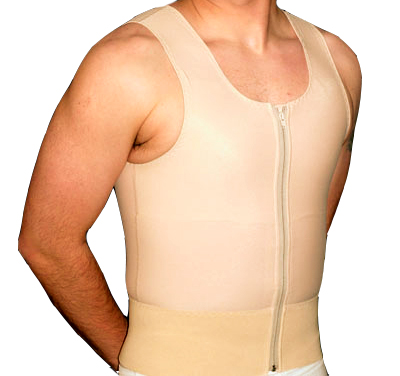Returning to Work
We understand that getting back to your daily routine is important, and you might be wondering when it’s safe to return to work. Here’s a simple guide:

Office or Desk Jobs: You can usually return to work the day after surgery. Before heading back to work, we recommend a quick follow-up visit to the clinic. The follow-up only takes about 20 minutes, ensuring your recovery is on track.

Physically Demanding Jobs: If your job involves physical labor, such as heavy lifting, operating machinery, or construction work, it's best to avoid strenuous activities for the first two weeks. This will help prevent any strain on the operated area and ensure a smooth recovery.

Exercise and Workouts: We encourage light physical activities to aid recovery. You can start leg workouts, light walking, or gentle jogging as early as a week after surgery. However, wait at least 4 weeks before resuming weightlifting or chest exercises. During the first month, avoid using your arms and chest too much to prevent complications.
Important Post-Op Care Tips

- Healthy Eating: Start with soft, gentle foods and avoid spicy or strong-tasting dishes. You can enjoy most foods, except for alcoholic beverages and overly salty meals.
- Avoid Smoking: Smoking can significantly delay the healing process and increase the risk of infection. This includes traditional cigarettes, e-cigarettes, hookah, and even exposure to secondhand smoke. Avoid smoking for at least 2 weeks post-surgery.
- Handling Fluid Leakage: It’s normal to experience a bit of fluid leakage during the first day. If this happens, replace the dressing with a sterile gauze. Make sure not to open the dressing point as the wound needs to stay protected from contamination.

- Compression Garment: Wearing your compression vest is crucial for your recovery. It prevents fluid accumulation, helps reduce swelling, and supports skin retraction. Wear it for 4 weeks—24 hours a day for the first 2 weeks, then 12 hours a day for the next 2 weeks.
- Showering and Bathing: You can take a shower 1 to 2 days after surgery with a waterproof band on the wound. For hot baths, saunas, or swimming, give your body 4 weeks to fully recover.
- Sponge Pad Care: If you were provided with a sponge pad, apply it around the areola for only 7 days. This helps with healing and provides gentle support.
What to Expect During Recovery
Your chest might appear asymmetrical, lumpy, swollen, or slightly dimpled. Don’t worry—this is a temporary phase that can last for 4 to 6 months. Light daily activities like walking can speed up recovery, but avoid lifting anything heavier than 40 pounds (about 18 kg) during the first week. It’s okay to roll luggage, but avoid lifting it.
- Massage and Stretching: After 2 weeks, start light massage and gentle stretching. The “Biobond (lumps)” under the skin may take 4 to 6 months to gradually decrease.
- Scarring: It’s normal to develop ‘Hypertrophic scars’ after chest surgery. Proper post-op care is essential to minimize their appearance.
When to Contact Us
our safety and comfort are our top priorities. Please reach out to us immediately if you experience any of the following symptoms within 3 to 4 days after surgery:
- Excessive pain
- High fever
- Yellowish discharge from the wound
- Persistent itching
We are here to support you every step of the way. If you have any questions or concerns, please do not hesitate to contact us. Your smooth and speedy recovery is our goal!
[คําถามที่พบบ่อย] ฉันสามารถผ่าตัด gynecomastia และดูดไขมันในช่องท้องพร้อมกันได้หรือไม่?
ที่ Evita Clinic ความปลอดภัยของผู้ป่วยต้องมาก่อน นั่นเป็นเหตุผลที่เราไม่ทําการผ่าตัด gynecomastia และการดูดไขมันในช่องท้องในวันเดียวกัน เรียนรู้เหตุผลทางการแพทย์ที่อยู่เบื้องหลังแนวทางสองขั้นตอนของเราและวิธีที่นําไปสู่การฟื้นตัวที่ปลอดภัยและเร็วขึ้นพร้อมผลลัพธ์ที่ดีขึ้น
การเย็บแผลต้านเชื้อแบคทีเรียที่ผ่านการรับรอง: Evita Clinic ป้องกันการติดเชื้อจากการผ่าตัดได้อย่างไร
Evita Clinic ภูมิใจใช้การเย็บแผลต้านเชื้อแบคทีเรียที่แนะนําโดย WHO ซึ่งได้รับการรับรองจาก Johnson & Johnson การเย็บแผลที่ดูดซึมได้คุณภาพสูงเหล่านี้ช่วยป้องกันการติดเชื้อบริเวณที่ผ่าตัดในขั้นตอนต่างๆ เช่น การรัดหน้าท้อง การผ่าตัด gynecomastia และการผ่าตัดด้านบน เพื่อให้ผู้ป่วยทุกคนฟื้นตัวได้อย่างปลอดภัยยิ่งขึ้น
โรคมอนดอร์: สิ่งที่คุณต้องรู้
โรค Mondor เป็นภาวะที่หายากแต่ไม่เป็นอันตราย ซึ่งสามารถเกิดขึ้นได้หลังการผ่าตัด เช่น gynecomastia หรือการผ่าตัดด้านบน ทําให้เกิดเส้นเลือดคล้ายสายใต้ผิวหนัง มักมีอาการไม่สบายเล็กน้อย แม้ว่าอาจดูน่ากังวล แต่ภาวะนี้เกิดขึ้นชั่วคราวและหายได้ตามธรรมชาติเมื่อเวลาผ่านไปด้วยการดูแลง่ายๆ เช่น การนวดและการประคบอุ่น เรียนรู้วิธีระบุและจัดการโรค Mondor เพื่อการฟื้นตัวที่ราบรื่นยิ่งขึ้น
การยึดเกาะหลังการผ่าตัด Gynecomastia: สาเหตุ อาการ และวิธีแก้ไข
การยึดเกาะหลังการผ่าตัดหลังการผ่าตัด gynecomastia อาจทําให้ผิวหนังบุ๋ม จํากัด การเคลื่อนไหว และแม้กระทั่งการเปลี่ยนแปลงของสีผิวเนื่องจากการไหลเวียนโลหิตบกพร่อง ซึ่งแตกต่างจาก BioBond ซึ่งละลายได้ภายใน 2-4 เดือน การยึดเกาะอาจคงอยู่นานกว่าหกเดือน โพสต์นี้สํารวจสาเหตุ อาการ กลยุทธ์การป้องกัน และตัวเลือกการรักษา พร้อมข้อมูลเชิงลึกจากผู้เชี่ยวชาญจาก Dr. Francis Jeon เรียนรู้ว่าการนวด การออกกําลังกาย และการแทรกแซงทางการแพทย์ที่เหมาะสมสามารถช่วยจัดการการยึดเกาะได้อย่างมีประสิทธิภาพได้อย่างไร
คู่มือฉบับสมบูรณ์ในการป้องกันและรักษารอยแผลเป็น hypertrophic หลังการผ่าตัด
รอยแผลเป็น hypertrophic เป็นปัญหาที่พบบ่อยหลังการผ่าตัด โดยเฉพาะอย่างยิ่งในบริเวณที่มีความตึงเครียดสูง เช่น หน้าอกหรือสะดือ คู่มือฉบับสมบูรณ์นี้จะอธิบายสาเหตุ กลยุทธ์การป้องกัน และการรักษาที่มีประสิทธิภาพ รวมถึง Steri-Strips ซิลิโคนเจล และการผ่าตัดแก้ไขรอยแผลเป็น ด้วยการดูแลเฉพาะทางจาก Evita Clinic
การผ่าตัด Gynecomastia และ Seroma: สาเหตุ การจัดการ และการฟื้นตัว
เซโรมาเป็นส่วนหนึ่งของกระบวนการฟื้นฟูสําหรับผู้ป่วย gynecomastia จํานวนมาก ด้วยความระมัดระวังที่เหมาะสม พวกเขามักจะแก้ไขได้เอง ที่ Evita Clinic เราให้คําแนะนําจากผู้เชี่ยวชาญและการดูแลเฉพาะบุคคลเพื่อช่วยให้คุณฟื้นตัวได้อย่างมั่นใจ หากคุณมีข้อกังวลใดๆ เกี่ยวกับการฟื้นตัว อย่าลังเลที่จะติดต่อทีมงานของเรา
